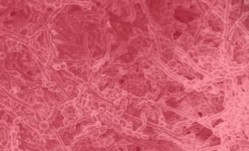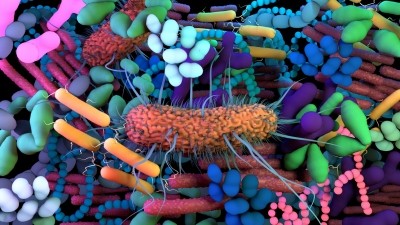New probiotic meant to balance microbial, fungal communities in gut

Called BIOHM, the probiotic product is a mixture of beneficial bacterial and fungal species along with a digestive enzyme. The underlying principle of the product, which was developed by a company called PathoBiome, is to interrupt the actions of digestive plaques—otherwise referred to as biofilms—that can negatively affect gut health.
The product is based upon the ground breaking work of Dr. Mahmoud Ghannoum, Ph.D., MBA. Dr Ghannoum’s paper of 2016 was an eye opener for microbiome scientists, said his son, attorney Afif Ghannoum, who serves as PathoBiome’s CEO.
“My father is a world leader in fungal research. His work has been cited more than 16,000 times. He was the scientist who coined the term ‘mycobiome.’He has been continuously funded by the National Institutes of Health since 1993,” Afif Ghannoum told NutraIngredients-USA.
Afif Ghannoum said his father’s research has changed the way that scientists look at what’s happening inside the gut. As so often has been the case with human health research, the picture is more complex than was first imagined.
“You have all sorts of microbiomes in your body, in the lungs, the oral cavity, the vagina and of course the gut. Everybody was looking at the microbiome as just being about just good bacteria,”Afif Ghannoum said. The elder Ghannoum, who is associated with Case Western Reserve University in Cleveland, OH, showed the importance of the fungal components of those microbiomes, he said.
“My father showed that there are not just good and bad bacteria, but also good and bad fungi,” Afif Ghannoum said.
Interkingdom cooperation
In the 2016 paper, Dr. Ghannoum and is research partners looked at parameters of microbiome makeup in Crohn’s Disease patients and healthy members of the same families in an area in Belgium. The researchers said they “identified positive interkingdom correlations between C. tropicalis (a fungus), E. coli, and S. marcescens (both microbial species) in CD patients and validated these correlations using in vitro biofilms. These results provide insight into the roles of bacteria and fungi in CD.”
Afif Ghannoum said the key insight, one that he called groundbreaking, is that his father’s team found that fungi and microbes were cooperating in the construction of the plaques. He said election microscope images show the filaments of the fungi being incorporated into the carbohydrate ‘armor’ that the bacteria start to secrete once enough individual cells have gathered at a certain location. Without the addition of the digestive enzyme to their product, he said that the plaques, once adhered to the intestinal wall, would be difficult to attack.
“The breakthrough finding was the paper that showed that there was interkingdom cooperation in the formation of these plaques. You could put all the good bacterial in the world in there and they could not penetrate these plaques,”he said.
Afif Ghannoum emphasized that while his father’s work was done on Crohn’s Disease sufferers, the company’s probiotic product was meant to support gut health, not treat disease.
“When you only maintain the good bacteria in the gut, fungus is allowed to flourish causing digestive imbalance. For the first time, consumers will be able to balance the total microbiome of bacteria and fungi in the digestive system with BIOHM,”he said.








